
“The ritual of decanting the sand is infinite / and with the sand goes our life,” wrote Argentine Jorge Luis Borges in his poem The Hourglass, as if the Tempisque sand excavators had inspired him.
The first verse could well come from this scene: a line of men navigating downstream in their sand-laden boats.
I remember the second verse as I walk along with Luis Jarquin, a 25-year-old guy who pushes the boat from the other side, with water up to his chest. Especially when he tells me in his low voice that “there on the other side is where the crocodile walks.” There goes our life.
His work is the activity with the lowest impact removing sand from the Tempisque. It is also the only more or less stable economic activity that a worker can have in Filadelfia, because the options are limited: they either work under the sun in melon or watermelon fields seasonally, or they look for sand year round, having faith that neither floods nor crocodiles will stop them. In Guanacaste’s climate, it’s hard to believe.
Many sand excavators like him start work before the first light of the day refracts over the waters of the enormous Tempisque. From Monday to Saturday, dozens of men go down to the bottom of the river to extract Filadelfia’s “black gold”, and earn their living from it.
It’s barely eight in the morning, but this is the fourth and last trip Luis makes for today. At half past two in the morning, he went down to the La Isleta area, walking along the dike that holds back the river (which was once famous for flooding all of Filadelfia). He took his boat, the pole used to propel it and got to work.
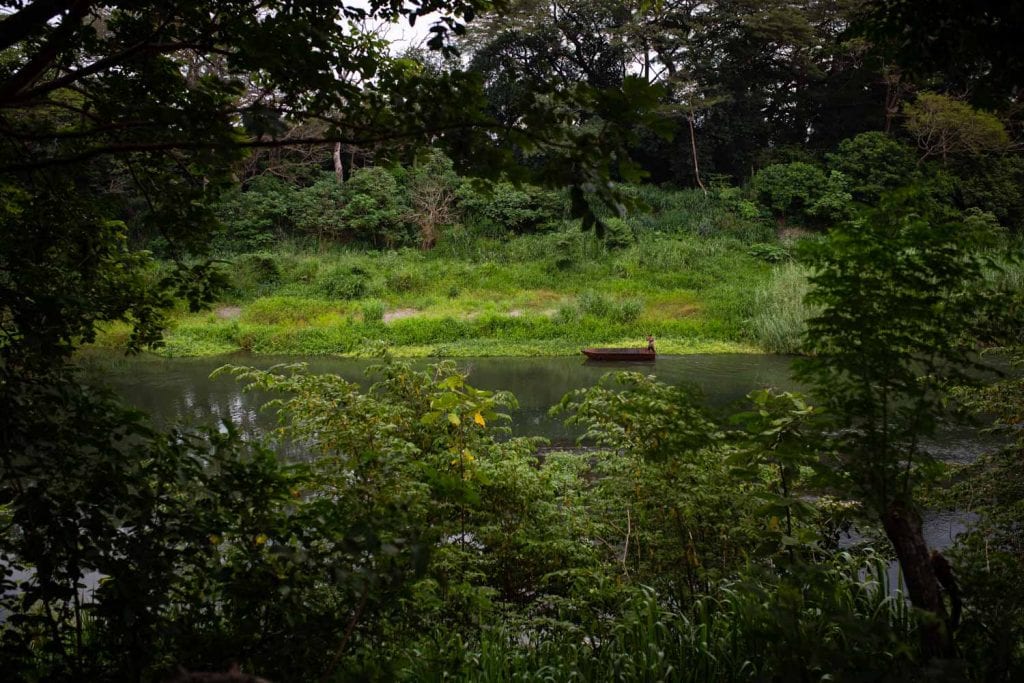
The area known as La Isleta is one of several points where sand excavators have been granted concessions to extract material.
It seems like repetitive and hard work, although Luis says that “you get used to it.” The sand excavators have to find a low area of the river, drop the two pieces of metal that they use as anchors— almost always old car parts— and then jump into the water.
There are many studies on exploiting water in the Tempisque but little is known about the use of its sand. What is certain is that extraction using machinery could put the health of the river at risk and that the process used by these sand excavators has less impact, explained the person in charge of the environmental education program of the Arenal-Tempisque Conservation Area, Yarely Diaz.
“These are small-scale activities that generate a slight impact, but we don’t know to what point the impact is feasible or what ecosystem it is affecting.”
The process of traditional sand excavators remains almost identical to when they began, more than a century ago: armed only with a bucket with holes in the bottom— to let the water drain out— they take a deep breath and go down to the bottom. A few seconds later, they return to the surface with the bucket loaded with a thick, dark mass, and they dump it out in the middle of the boat. They do this over and over again. For each breath of air, a bucket of sand. They do it for at least five hours, or however long is necessary to complete their four trips to the small beach where they unload the sand.
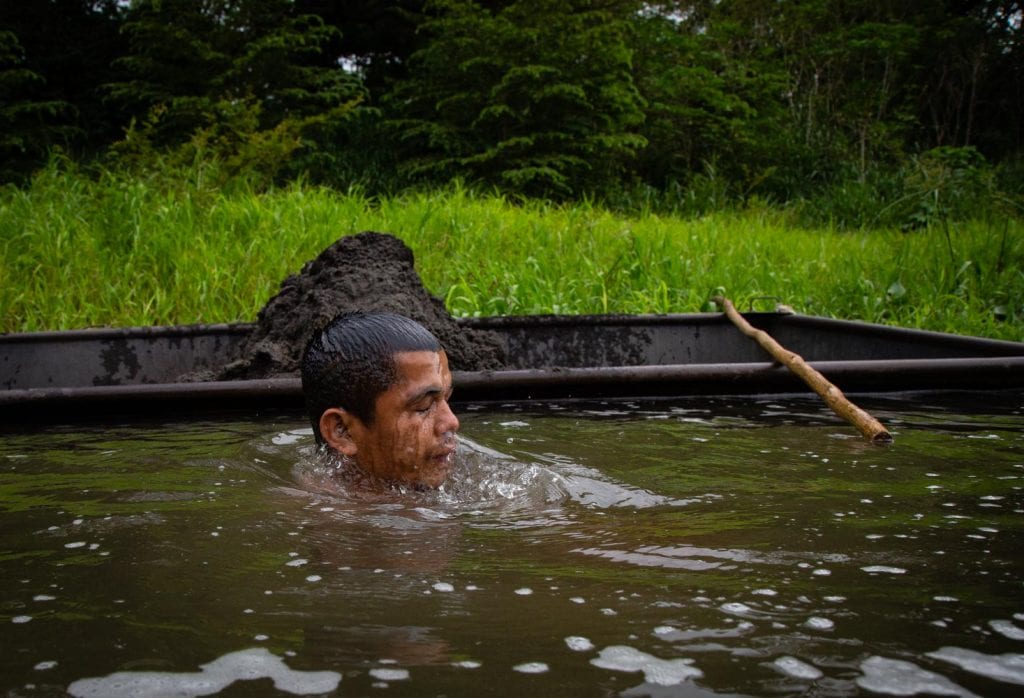
Luis Jarquin removes four boatloads of sand a day, which is equivalent to about ¢14,000 (about $23.30).
The silence is broken when two herons cross across the cloudy sky above our heads. A dark day like this can extend the shift until ten in the morning; otherwise they would stop at seven or eight, when the day begins to heat up.
Aside from the herons, the only sound that can be distinguished is the water flowing slowly, and the sand excavators hitting the boat with each push of their pole, like faint chimes that announce that they are passing along the river.
“In this part, we can get on the boat,” Luis tells me when we reach a deeper segment. While I shake off the cold water from my body, along with my fear of running into the crocodile, this Nicaraguan explains more about his trade, which he began three years ago.
Black Gold
“I quit the army of my country. Killing people like that does not suit me,” says Luis seriously as we progress along the river. He propels the boat by burying the long pole, which has a nail in the tip so that it does not slip at the bottom of the river. The water’s current carries with it aquatic plants with purple flowers that slide down the river as slowly as we do.
His new job is more peaceful but it isn’t simpler because of that. He tells me that as a laborer, for every “pangada” full of sand, his boss pays him ¢3,500 (about $5.80). Each load contains more or less a cubic meter (m3) of sand.
The Tempisque Valley Sand Excavators Association, founded 20 years ago to organize the guild, pays its members about ¢5,000 (about $8.50) per m3. Some of them do not remove sand themselves because they are older, so they hire laborers like Luis to extract it and they earn about ¢1,500 (about $2.50) per m3.
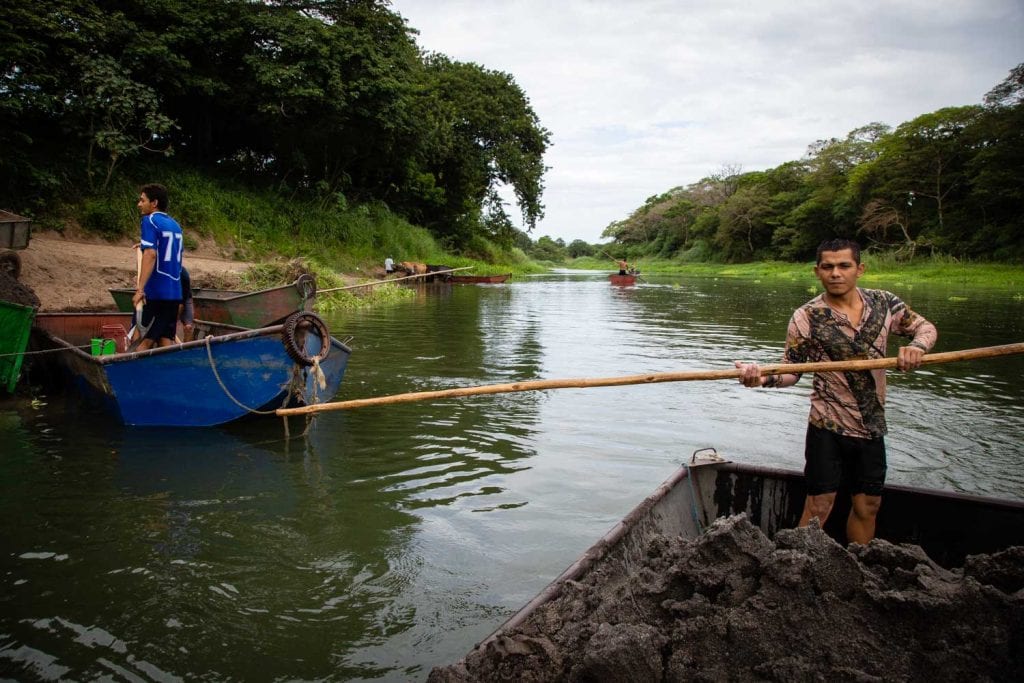
Luis Jarquin removes four boatloads of sand a day, which is equivalent to about ¢14,000 (about $23.30).
Many of the 33 members that make up the association also own the boats, carts and oxen that they use to transport the sand to a collection center. They returned to this rudimentary method to remove the sand from the riverbed since Minae prohibited heavy machinery from entering the riverbank to collect it ten years ago.
Little by little, we approach the small beach where all the sand excavators unload their bo. From time to time, Luis takes the bucket and jumps back into the river to bail out the water that seeps into the boat faster.
The other boats that go up river in search of more sand are captained by faces of all ages, some so young that they don’t seem to have reached the age of adulthood. Meanwhile, the older sand excavators begin to bring the oxen close to the shore to load the carts.
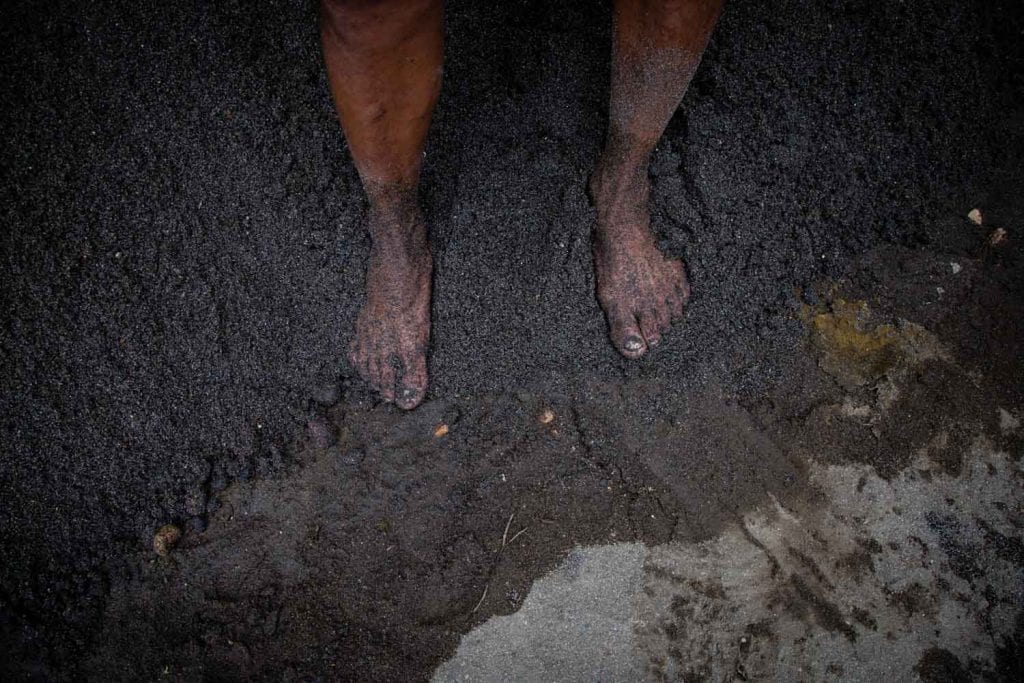
Omar Medina unloads the sand on one of the piles. The Association receives around 250 cubic meters of sand per day.
Luis’s boss’s cart, which is already full of sand, receives the last shovelfuls of material, until Juan Santana, who has excavated sand for more than 40 years, tells Luis to leave it that way, not to fill it any fuller.
From here they take the carts to a field where each owner makes their own pile of sand, then they load it into the dump truck to take it to the association. The members have a ticket with the dump truck’s license plate number in order to keep track of who each shipment belongs to.
“Heyhey, Heyhaa!,” Juan shouts, trying to accommodate his oxen with shouts and bellows, to begin the climb up the dike’s slope, and he bids farewell speaking of the Tempisque as if it were his bounteous patron. “While the permits are there and the river leaves sand, it works.”
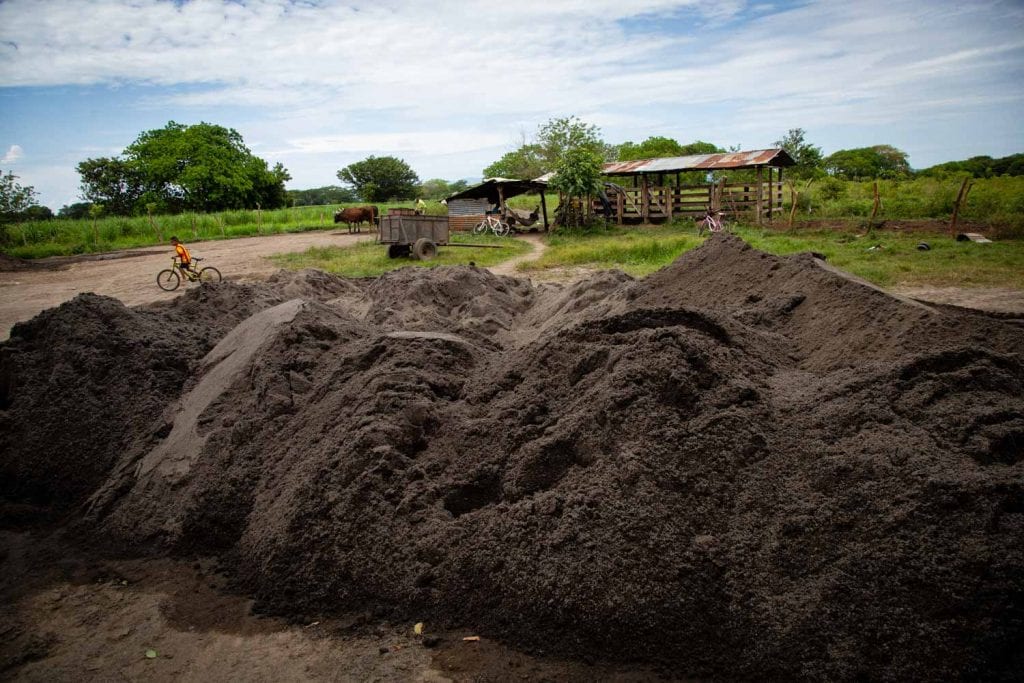
This is how one of the sand piles looks before being taken to the Tempisque Valley Sand Excavators Association, where intermediaries market it.


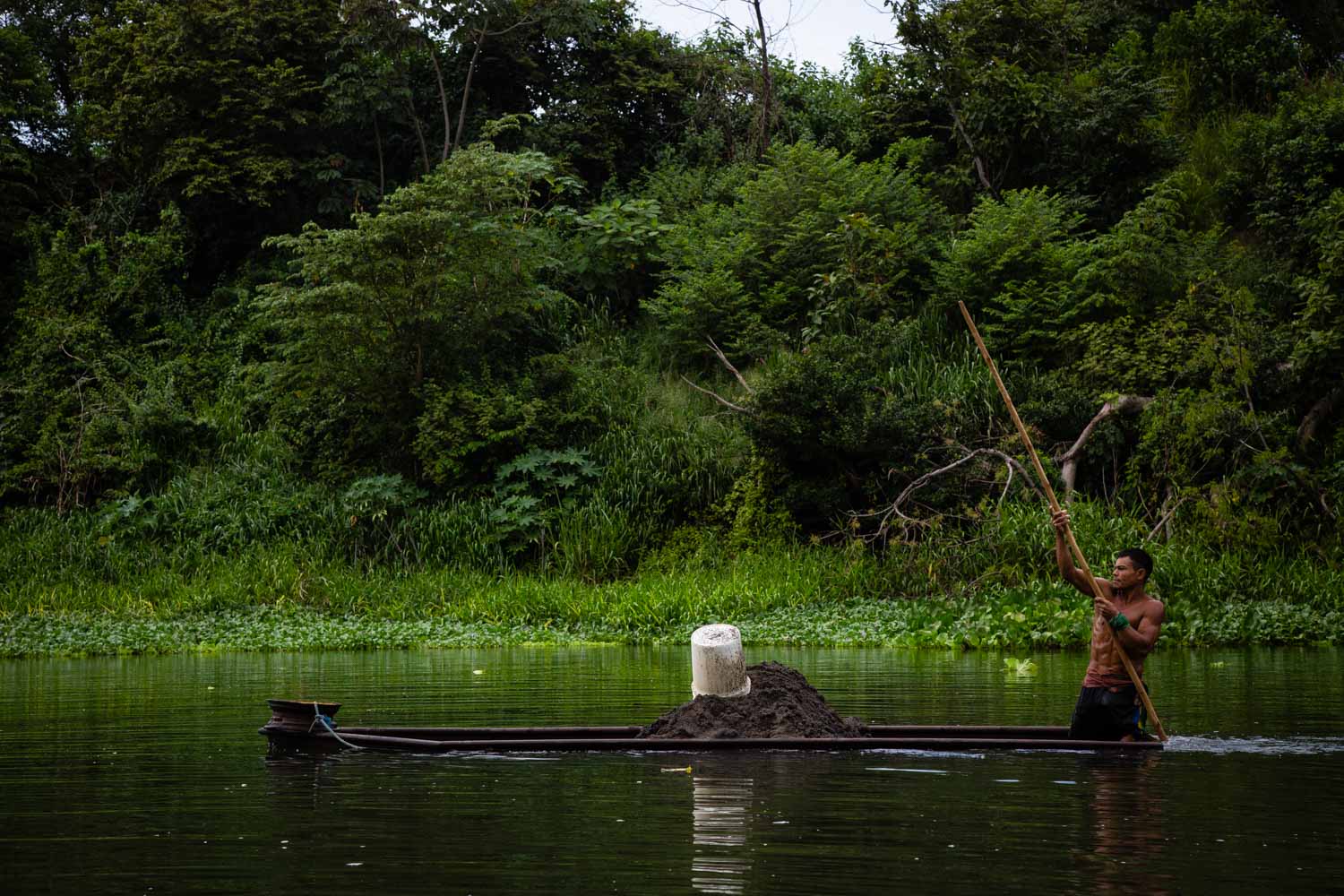

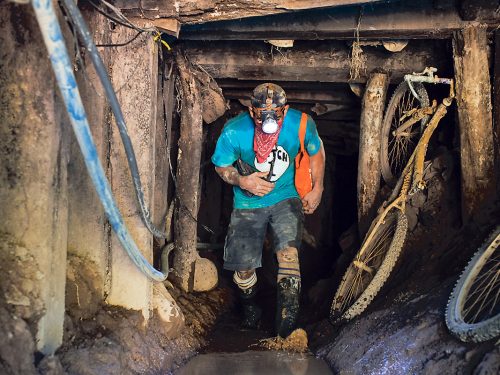
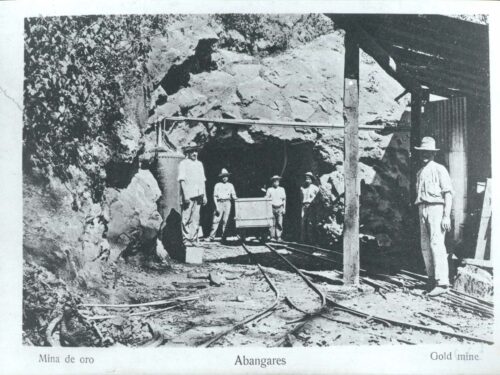

Comments